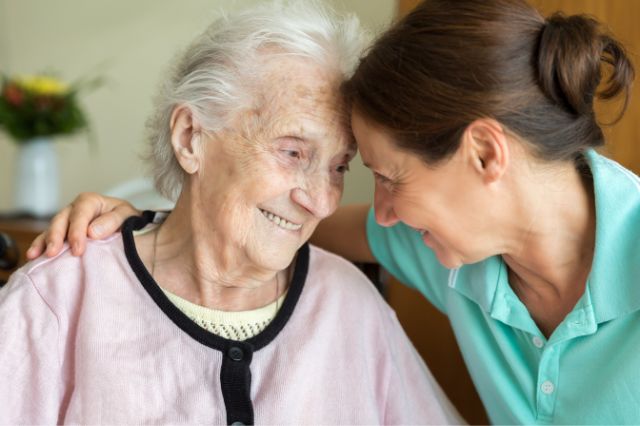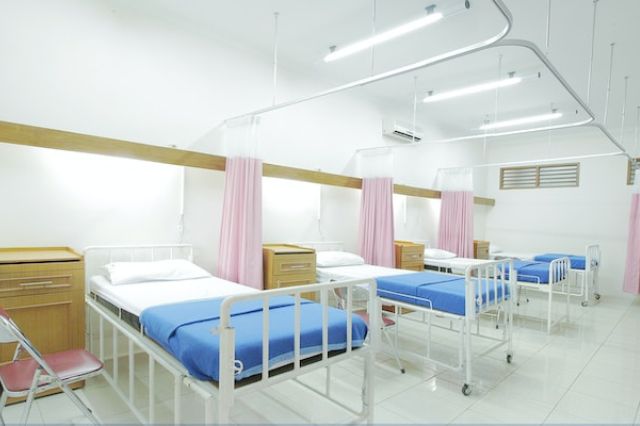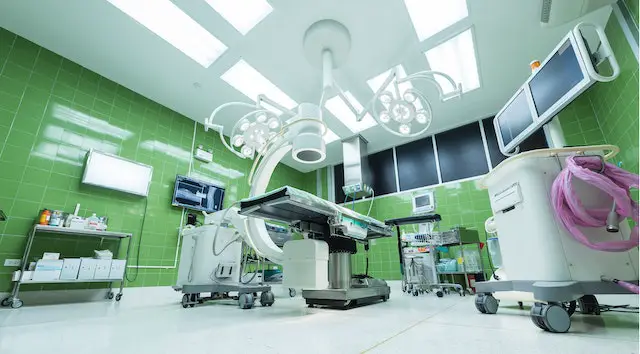Wellbeing
Living with Dementia

With over 55 million people worldwide (as of 2020) living with dementia, the chances are that you will know someone who has the condition. Dealing with it on a daily basis is stressful for both the patient and their relatives; the problems of memory loss, confusion, and repeating questions can be draining for all involved.
Naturally, early diagnosis will help the sufferer and their family understand what is going on and put them on the road to getting the correct treatment. However, as the condition worsens, residential care may well have to be considered, which no relative takes lightly and can be very stressful in and of itself.
Is All Dementia the Same?
There are many different forms of dementia, and some of them exhibit their unique symptoms at various stages. In some cases, early diagnosis is not always possible due to the slow development of symptoms, but once diagnosed, many types of dementia can be managed and treated so that the patient can make the most of living with their condition.
For example, Lewy body dementia treatment includes medications that need to be tuned to the person individually. The use of physical, occupational, and speech therapies along with psychotherapy will help with the overall wellness of the patient. Thanks to treatment, coupled with support from family and friends, the patient can continue to enjoy their lifestyle and manage their symptoms for as long as possible.
How Can You Help Someone Living with Dementia?
As the relative or friend of someone with dementia, remember that they are still the same person you know and love. Try not to be too stressed yourself; your loved one has a condition and needs your support more than ever, and it’s almost guaranteed that they would support you in the same way if the tables were turned and you were the one in need.
Ultimately, dementia is challenging no matter from what angle you look at it; however, by focusing on the positives, engaging in things that you both enjoy together, and supporting your loved one overall, you and they both can make the most of the time they have left.
Furthermore, when the time comes that they need full-time care at a care facility, it’s important to choose one that’s close by so that your loved one isn’t isolated and everyone they know and love can travel to visit them without long journeys.
How Do You Handle Having Dementia?
Everyone experiences dementia in a different way, so your approach may need fine-tuning to suit your particular needs, lifestyle, and symptoms. Whatever you do, though, don’t hide away – stay in touch with your family and friends and go out and make even more.
Join a social group or hobby club, keep your mind and body active, eat well, and exercise if you can, and you’ll be able to enjoy life to the fullest and reduce your symptoms. Plus, if you have someone helping to care for you, you’ll be able to enjoy an improved lifestyle and a greater sense of safety and freedom from your illness.
What’s more, recently, more and more dementia-friendly groups have become available. You can visit cinemas, leisure establishments, and enjoy days out with other members of such groups – all of which help keep your mind and soul positive and active.
Remember, life does not stop because you have been diagnosed with dementia; in fact, it can open up a whole new adventure in terms of meeting new people and getting involved with exciting hobbies.
Should You Tell People?
Yes, definitely – dementia is nothing to be ashamed of. Still, despite that being said, only tell people when you are ready to do so. Even better yet – do more than that; explain how it affects you and what you have trouble with, and you will be pleasantly surprised at how helpful and understanding people can be. Some may treat you differently, but don’t take this as an insult – they just might not understand, and you can help by educating them about the condition and how they can help you.
Overall, it’s crucial to remember this fact: you are still you, and you don’t need to think of or treat yourself any differently. However, you can’t control others’ thoughts and feelings; you may even lose touch with some old friends – after all, not everyone can be accommodating with dementia, which can hurt. However, with support from your closest family and loved ones combined with all those new friends you’ll probably be making, you can still get out there and enjoy a vibrant social life. Just don’t isolate yourself, and you’ll never go wrong.
How Can You Help Yourself?
All that nutritional and health advice that you were told all your life will help you stay active and at your best; eat a healthy diet, exercise often, get plenty of sleep, keep up your social life, and undertake therapy as and when needed, and you’ll be well on your way to making the most out of life with dementia.


Wellbeing
Exploring the Entourage Effect with CBD


In recent years, CBD (cannabidiol) has taken the wellness world by storm, touted for its potential therapeutic benefits and minimal side effects.
As the popularity of CBD products soars, researchers and enthusiasts alike are uncovering the significance of an intriguing phenomenon known as the “Entourage Effect.” Whether you’re implementing CBD into your day with the help of CBD tea bags or CBD oil, this captivating interaction between cannabinoids has the potential to revolutionize how we view and use CBD as a therapeutic remedy.
Let’s delve into the world of CBD and explore the entourage effect.
Understanding the Basics: What is CBD?
Before we dive into the entourage effect, let’s briefly recap what CBD is. CBD is a naturally occurring compound found in the Cannabis sativa plant. Unlike its counterpart THC (tetrahydrocannabinol), CBD does not produce psychoactive effects, making it an attractive option for those seeking relief without the intoxicating high.
The Entourage Effect: A Synergistic Symphony
The entourage effect is a concept that suggests the combination of multiple cannabinoids, terpenes, and other plant compounds found in cannabis enhances the therapeutic potential of CBD. In other words, these compounds work together in harmony, producing a more profound and comprehensive effect than CBD alone.
Cannabinoids at Play: A Symphony of Healing
CBD and THC: Yin and Yang
The most well-known duo of cannabinoids is CBD and THC. While CBD offers a non-intoxicating and calming influence, THC provides a euphoric experience. When combined in the right ratio, as seen in some full-spectrum CBD products, they complement each other, potentially optimizing therapeutic outcomes.
The Lesser-Known Cannabinoids
CBD is just one of over a hundred cannabinoids present in the cannabis plant. Cannabinoids like CBG (cannabigerol), CBC (cannabichromene), and CBN (cannabinol) add their unique attributes to the entourage effect. CBG has shown promise in supporting brain health, CBC exhibits anti-inflammatory properties, and CBN may aid in sleep regulation.
Unravelling the Role of Terpenes
Terpenes are aromatic compounds found in cannabis that contribute to its distinctive smell and taste. Beyond aesthetics, terpenes play a crucial role in the entourage effect. They have their own therapeutic properties and can influence the way cannabinoids interact with our bodies. For instance, terpene myrcene is known for its potential sedative effect, while limonene may have uplifting and mood-enhancing qualities.
The Science Behind the Synergy
Enhanced Bioavailability
One way the entourage effect manifests is through increased bioavailability. When cannabinoids and terpenes work together, they may improve the absorption of CBD in the body, allowing for more efficient utilization of its therapeutic properties.
Targeting the Endocannabinoid System (ECS)
The endocannabinoid system, a complex network of receptors throughout the body, plays a vital role in regulating various physiological processes. The entourage effect may optimize the interaction between cannabinoids and the ECS, potentially leading to a more balanced and robust therapeutic response.
Making the Most of the Entourage Effect: Choosing the Right Products
To experience the full potential of the entourage effect, selecting the right CBD products is crucial. Full-spectrum CBD products contain a diverse range of cannabinoids and terpenes, offering a more comprehensive entourage effect. Broad-spectrum CBD products, on the other hand, contain multiple cannabinoids and terpenes but are THC-free, making them suitable for those who want to avoid even trace amounts of THC.
The Future of CBD and the Entourage Effect
As the world of CBD research continues to expand, we can expect to gain deeper insights into the entourage effect and how different combinations of cannabinoids and terpenes influence its outcomes. The entourage effect has the potential to reshape the CBD industry and redefine how we approach natural remedies and wellness.
The entourage effect presents an exciting avenue for CBD enthusiasts and researchers alike. As we uncover more about the synergistic interactions between cannabinoids and terpenes, we may unlock the true therapeutic potential of CBD and cannabis as a whole. Embracing the entourage effect could be a game-changer, providing us with a holistic approach to wellness and redefining our relationship with these remarkable plant compounds.
Wellbeing
Follow This Comprehensive Guide and Furnish Your Private Practice


Setting up a private practice is an exciting endeavor for healthcare professionals. It provides an opportunity to create a comfortable and welcoming space where patients can receive personalized care. However, furnishing a private practice requires careful planning and attention to detail. In this comprehensive guide, we will explore the essential steps to furnish your private practice and create an environment that promotes healing and well-being.
Planning and Designing Your Private Practice
Before embarking on furnishing your private practice, it is crucial to plan and design the space effectively. Start by identifying your target clientele and understanding their needs. This knowledge will help you make informed decisions about the layout, color schemes, and overall ambiance of your practice. Additionally, set clear goals and objectives for your practice and establish a realistic budget to guide your decision-making process.
Choosing the right location for your practice is also a critical factor. Consider factors such as accessibility, proximity to public transportation, and the local demographic. Furthermore, familiarize yourself with zoning regulations and permits to ensure compliance with legal requirements.
Creating an Inviting Reception Area
The reception area is your patients’ first point of contact, making it a crucial area to focus on when furnishing your private practice. Design the reception area to be welcoming and comfortable. Choose furniture that provides adequate seating and consider ergonomic options to ensure patient comfort. Incorporate soothing colors and lighting to create a calming atmosphere. Display informative materials such as brochures or magazines that educate and engage patients while they wait. Add personal touches and decor elements to reflect your practice’s unique identity and create a warm environment.
Establishing Functional Examination and Treatment Rooms
The examination and treatment rooms are where the actual medical procedures take place. Design these spaces with functionality and efficiency in mind. Ensure that the patient examination rooms are well-organized, allowing easy access to equipment and supplies. Acquire specialized medical equipment and instruments needed for your specific practice area.
Create a treatment area that is comfortable and functional for both patients and healthcare providers. Consider lighting, adjustable treatment tables, and privacy curtains to enhance the patient experience. Regarding privacy curtains, one essential element to consider is the installation of hospital curtain tracks when outfitting your practice. Hospital curtain tracks are vital in maintaining privacy and creating separate spaces within your practice. These tracks allow you to install curtains that can be drawn to create private areas for patient consultations, examinations, or treatments. They provide a flexible solution for maintaining confidentiality while optimizing available space. Furthermore, prioritize cleanliness and organization to maintain a sterile environment that meets the highest hygiene standards.
Equipping Your Practice with Essential Tools and Equipment
Equipping your private practice with the right tools and equipment is vital for delivering quality care. Start by identifying the necessary equipment specific to your field of practice, such as examination tables, medical devices, and diagnostic tools. Research suppliers and invest in high-quality medical supplies to ensure the safety and well-being of your patients.
In addition to medical equipment, it is essential to install reliable technology and communication systems. These include computers, software for electronic medical records, appointment scheduling systems, and secure internet connectivity. Furthermore, consider ergonomic furniture and fixtures for both patients and staff to promote comfort and reduce strain during consultations and treatments.
Implementing Effective Storage and Organization Solutions
An organized and well-managed practice is essential for smooth operations. Assess your storage needs and invest in smart storage solutions for medical supplies, equipment, and administrative materials. Optimize space utilization by using cabinets, shelves, and bins to keep everything organized and easily accessible.
Develop efficient systems for patient records and administrative paperwork, such as labeling and categorizing documents. Streamline inventory management processes by implementing digital systems that allow for easy tracking and reordering of supplies. Additionally, consider utilizing digital storage and backup systems to protect patient data and ensure its accessibility.
Enhancing the Ambience with Décor and Aesthetics
The aesthetic appeal of your private practice plays a crucial role in creating a calming and welcoming environment. Choose a cohesive and professional color scheme that aligns with your practice’s brand identity. Incorporate artwork and decorative elements that promote relaxation and inspire positivity. Natural elements such as plants and natural light can contribute to a serene atmosphere.
Maintaining cleanliness and hygiene is vital for patient confidence and comfort. Regularly clean and sanitize all areas, ensuring a fresh and inviting space for patients. Additionally, establish maintenance routines to address any issues promptly and keep the practice in optimal condition.
Ensuring Privacy and Security Measures
Patient privacy and data security are paramount in a private practice. Implement privacy policies and procedures to safeguard patient information. Utilize secure patient data management systems and ensure that staff members are trained on confidentiality and privacy protocols. Install physical security measures such as surveillance cameras and access control systems to protect both patient information and physical assets.
Hiring and Training Support Staff
Hiring and training support staff is a vital component of establishing a successful private practice. Your support staff plays a crucial role in providing efficient and effective patient care, managing administrative tasks, and creating a positive experience for your patients. When it comes to staffing your practice, it’s important to consider several factors to ensure you have a capable and well-rounded team.
First and foremost, clearly identify the necessary roles and responsibilities within your practice. This includes positions such as receptionists, medical assistants, nurses, billing specialists, and any other personnel required for the smooth operation of your practice. Determine the specific skills and qualifications needed for each role to attract candidates who align with your practice’s requirements.
Developing a comprehensive hiring and recruitment process is crucial to finding the right individuals for your practice. This process may include advertising job openings, reviewing resumes and applications, conducting interviews, and checking references. It’s important to assess candidates not only for their skills and qualifications but also for their fit with your practice’s culture and values.
Once you have selected the right individuals, providing comprehensive training is essential to ensure they are well-prepared for their roles. Create a structured training program that covers all aspects of your practice, including protocols, procedures, and software systems they will be using. This training should also emphasize the importance of patient care, confidentiality, and professionalism.
In addition to initial training, ongoing professional development and education are crucial to keep your support staff up-to-date with industry standards and advancements. Encourage your staff to participate in relevant workshops, seminars, and continuing education programs. This investment in their professional growth not only benefits your practice but also enhances their skills and job satisfaction.
Nurturing a positive and supportive work environment is equally important. Foster open communication and collaboration among your staff members, creating a culture of teamwork and mutual respect. Encourage regular feedback from your staff and provide opportunities for them to voice their concerns or suggestions for improvement. Recognize and reward their hard work, which can contribute to high morale and staff retention.
Maintaining and Updating Your Private Practice
Once your private practice is up and running, it is essential to maintain and update it regularly. Implement regular maintenance and cleaning routines to keep the space in optimal condition. Service and calibrate equipment periodically to ensure accuracy and functionality.
Stay up-to-date with industry trends and advancements to offer the best possible care to your patients. Seek feedback from patients and staff to identify areas for improvement and implement necessary changes. Adapt and evolve your practice as it grows to accommodate changing needs and demands.


Furnishing your private practice is an important step in creating a comfortable and inviting environment for your patients. By following this comprehensive guide, you can plan, design, and equip your practice effectively. Paying attention to details such as the reception area, examination rooms, storage solutions, ambience, privacy measures, staff hiring and training, and regular maintenance will contribute to a successful and thriving practice. Take action today and create a private practice that provides the highest quality care and promotes the well-being of your patients.
Wellbeing
The Science Behind CBD Flower: How Cannabinoids Interact with the Body


CBD has gained significant popularity in recent years for its potential therapeutic benefits. Derived from the hemp plant, CBD is available in various forms, including oils, capsules, and edibles.
However, one form that has gained traction among users is CBD flowers. CBD flowers refer to the dried and cured buds of the hemp plant, which can be smoked or vaporised. In this article, we will explore the science behind CBD flowers and how cannabinoids interact with the body.
Understanding Cannabinoids
Cannabinoids are a group of chemical compounds found in the cannabis plant, including CBD and THC (tetrahydrocannabinol). CBD is non-intoxicating, meaning it does not produce the “high” associated with THC. When consumed, cannabinoids interact with the body’s endocannabinoid system (ECS), a complex cell-signalling system involved in regulating various physiological processes.
The Endocannabinoid System (ECS)
The ECS comprises three main components: endocannabinoids, receptors, and enzymes. Endocannabinoids are naturally occurring cannabinoids produced by the body. Receptors, known as CB1 and CB2 receptors, are found throughout the body and are responsible for receiving and transmitting signals. Enzymes are responsible for breaking down endocannabinoids once their function is complete.
Cannabinoids and the ECS
When CBD is consumed in the form of CBD flower, it interacts with the ECS by influencing the activity of endocannabinoids and their receptors. CBD does not directly bind to CB1 or CB2 receptors but instead modulates their activity. This modulation can result in various effects, such as reducing inflammation, alleviating pain, and promoting relaxation.
Potential Therapeutic Effects
CBD flower has been studied for its potential therapeutic effects, and research suggests it may have several benefits. Here are some of the key areas where CBD flower shows promise:
- Pain Management: CBD has shown potential as an analgesic, or pain-relieving agent. It may help reduce chronic pain by interacting with receptors involved in pain perception.
- Anxiety and Stress Reduction: CBD has been reported to have anxiolytic (anti-anxiety) properties, with some studies indicating its potential in reducing anxiety disorders and stress.
- Anti-Inflammatory Properties: CBD exhibits anti-inflammatory effects by interacting with receptors involved in the immune system’s response. This could be beneficial for conditions such as arthritis and inflammatory bowel diseases.
- Sleep Improvement: CBD may promote better sleep by reducing anxiety and improving sleep quality. It could potentially benefit individuals with insomnia or other sleep disorders.
- Neuroprotective Effects: CBD has shown promise in studies related to neurodegenerative diseases, such as Alzheimer’s and Parkinson’s. It may help protect brain cells from damage and reduce inflammation in the nervous system.
Safety Considerations
While CBD flower is generally considered safe, it’s important to be aware of a few factors. Firstly, CBD can interact with certain medications, so it’s crucial to consult a healthcare professional before using CBD if you are taking any prescription medications. Additionally, CBD flowers may contain trace amounts of THC, which could lead to a positive drug test result. The quality and sourcing of CBD flowers are crucial. Look for products that undergo third-party lab testing to ensure they are free from contaminants and contain the advertised amounts of CBD.
CBD flower offers a natural and convenient way to consume CBD and experience its potential therapeutic effects. Through its interaction with the body’s endocannabinoid system, CBD can modulate various physiological processes and provide relief for conditions such as pain, anxiety, inflammation, and sleep disorders.
-



 Captions3 years ago
Captions3 years ago341 Sexy Captions to Fire Up Your Instagram Pictures
-



 Captions3 years ago
Captions3 years ago311 Night Out Captions for Instagram and Your Crazy Night
-



 Captions3 years ago
Captions3 years ago245 Saree Captions for Instagram to Boost Your Selfies in Saree
-



 Captions3 years ago
Captions3 years ago256 Best Ethnic Wear Captions for Instagram on Traditional Dress
-



 Captions3 years ago
Captions3 years ago230 Blurred Picture Captions for Instagram
-



 Captions3 years ago
Captions3 years ago275 Deep Captions for Instagram to Express Your Thoughts
-



 Quotes3 years ago
Quotes3 years ago222 Nail Captions for Instagram to Showcase Your Fresh Manicure
-



 Captions3 years ago
Captions3 years ago211 Laughing Captions for Instagram | Laughter Is the Best Medicine






